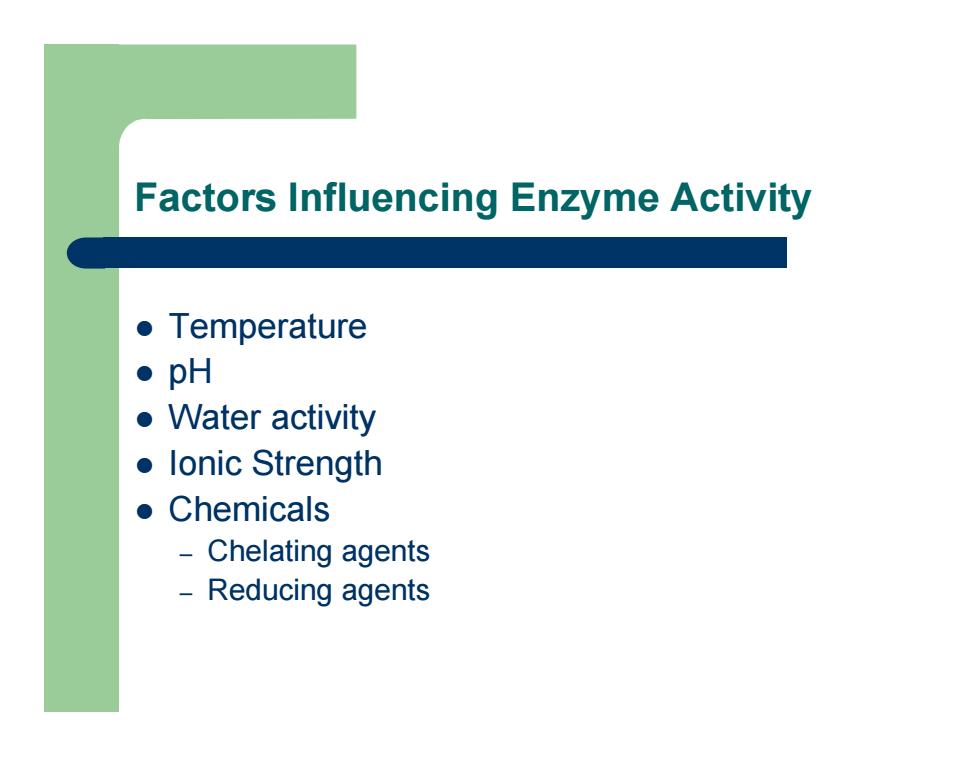
Factors Influencing Enzyme Activity z Temperature z pH z Water activity z Ionic Strength z Chemicals – Chelating agents – Reducing agents
Factors Influencing Enzyme Activity z Temperature z pH z Water activity z Ionic Strength z Chemicals – Chelating agents – Reducing agents

Temperature z Enzymes function very slowly at sub-freezing temperatures z Optimal activity in the 30-40C range z Denature above 45C
Temperature z Enzymes function very slowly at sub-freezing temperatures z Optimal activity in the 30-40C range z Denature above 45C
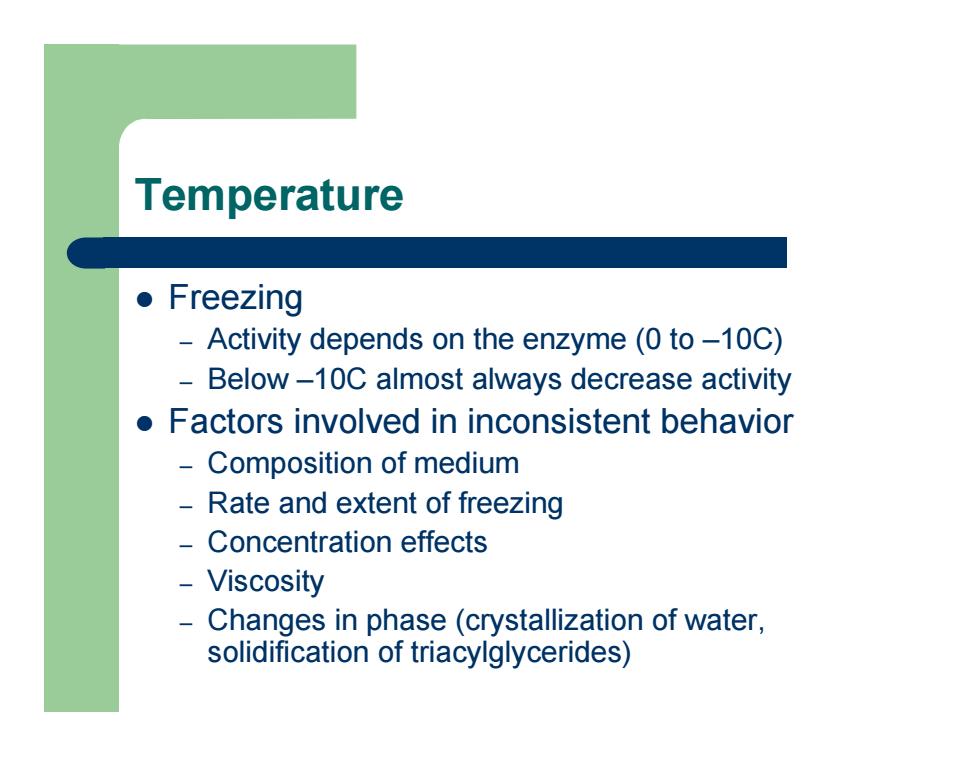
Temperature z Freezing – Activity depends on the enzyme (0 to –10C) – Below –10C almost always decrease activity z Factors involved in inconsistent behavior – Composition of medium – Rate and extent of freezing – Concentration effects – Viscosity – Changes in phase (crystallization of water, solidification of triacylglycerides)
Temperature z Freezing – Activity depends on the enzyme (0 to –10C) – Below –10C almost always decrease activity z Factors involved in inconsistent behavior – Composition of medium – Rate and extent of freezing – Concentration effects – Viscosity – Changes in phase (crystallization of water, solidification of triacylglycerides)
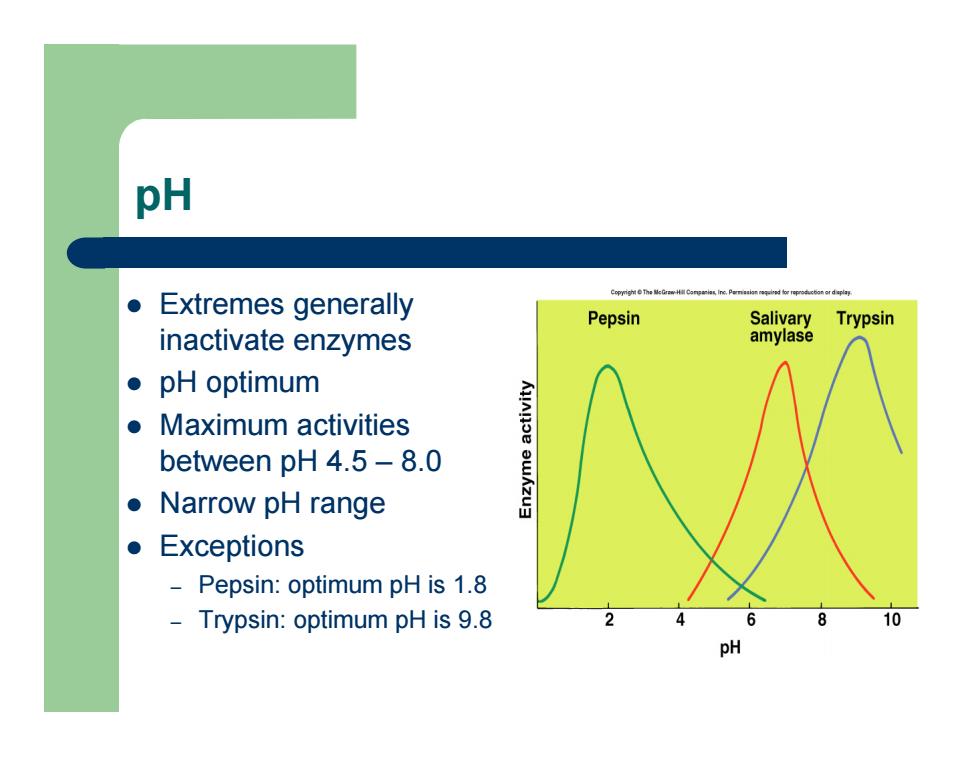
pH z Extremes generally inactivate enzymes z pH optimum z Maximum activities between pH 4.5 – 8.0 z Narrow pH range z Exceptions – Pepsin: optimum pH is 1.8 – Trypsin: optimum pH is 9.8
pH z Extremes generally inactivate enzymes z pH optimum z Maximum activities between pH 4.5 – 8.0 z Narrow pH range z Exceptions – Pepsin: optimum pH is 1.8 – Trypsin: optimum pH is 9.8
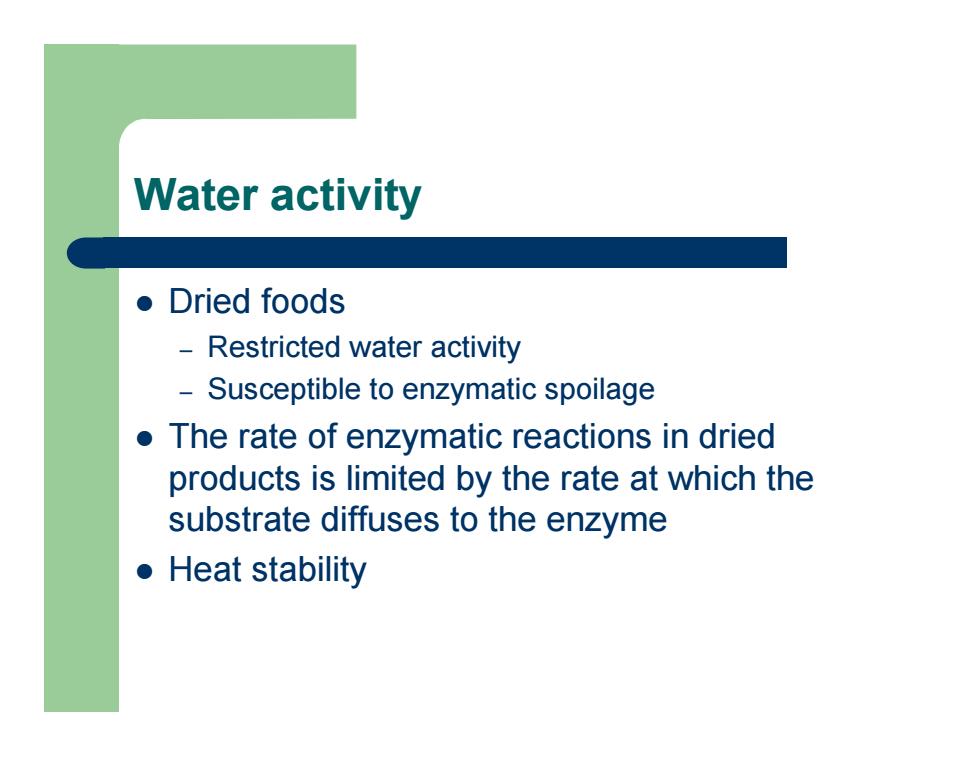
Water activity z Dried foods – Restricted water activity – Susceptible to enzymatic spoilage z The rate of enzymatic reactions in dried products is limited by the rate at which the substrate diffuses to the enzyme z Heat stability
Water activity z Dried foods – Restricted water activity – Susceptible to enzymatic spoilage z The rate of enzymatic reactions in dried products is limited by the rate at which the substrate diffuses to the enzyme z Heat stability
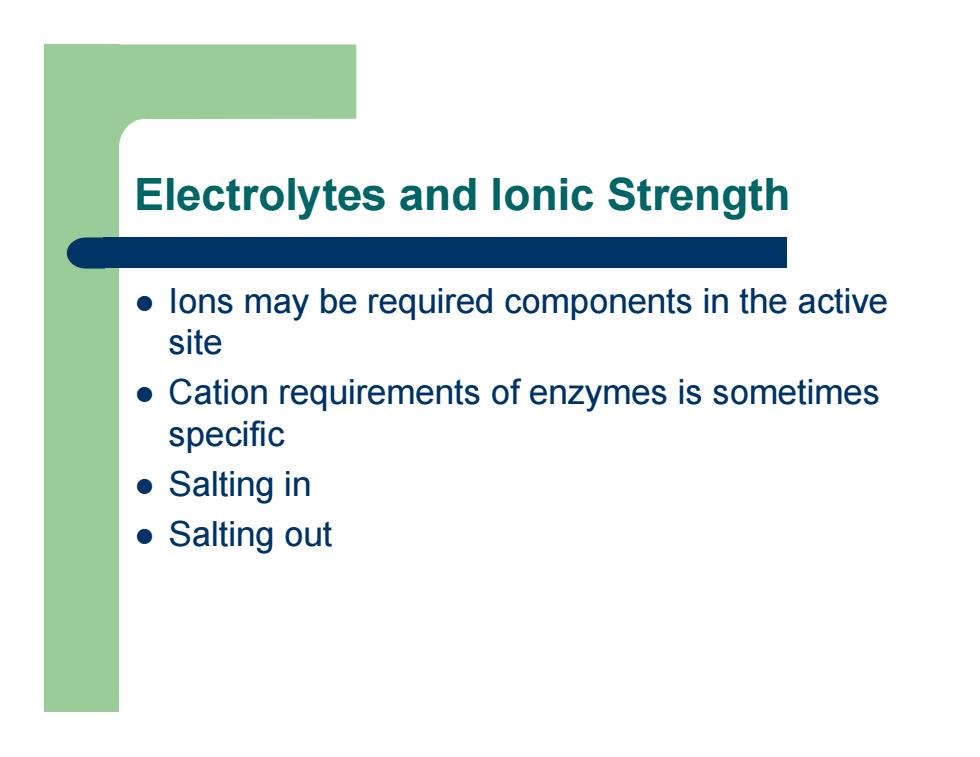
Electrolytes and Ionic Strength z Ions may be required components in the active site z Cation requirements of enzymes is sometimes specific z Salting in z Salting out
Electrolytes and Ionic Strength z Ions may be required components in the active site z Cation requirements of enzymes is sometimes specific z Salting in z Salting out
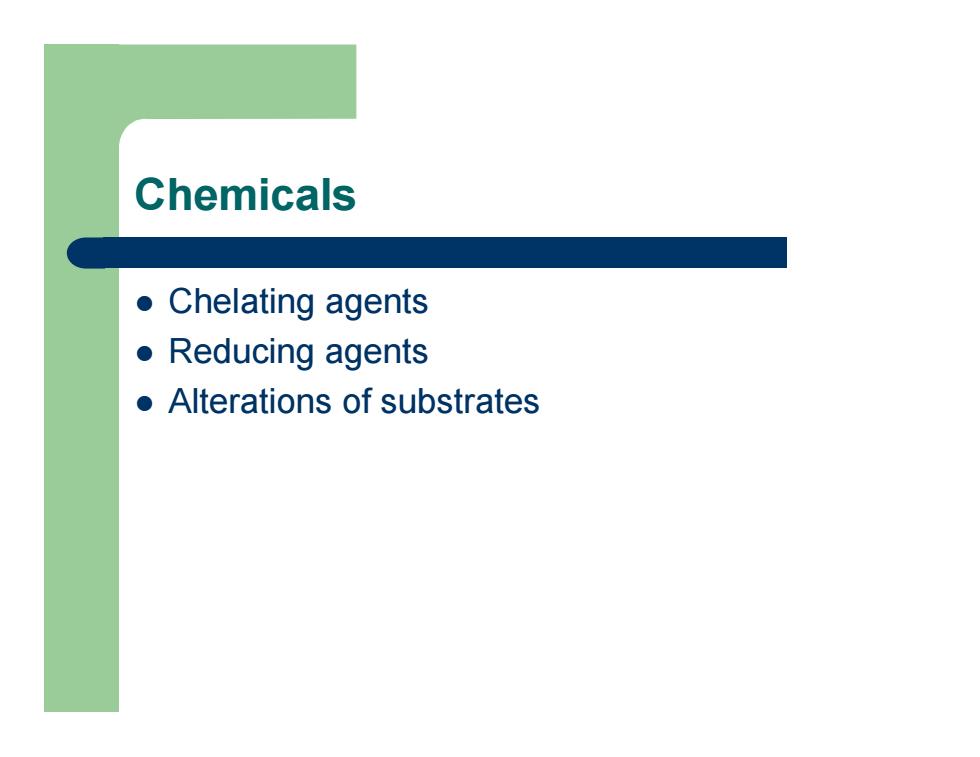
Chemicals z Chelating agents z Reducing agents z Alterations of substrates
Chemicals z Chelating agents z Reducing agents z Alterations of substrates
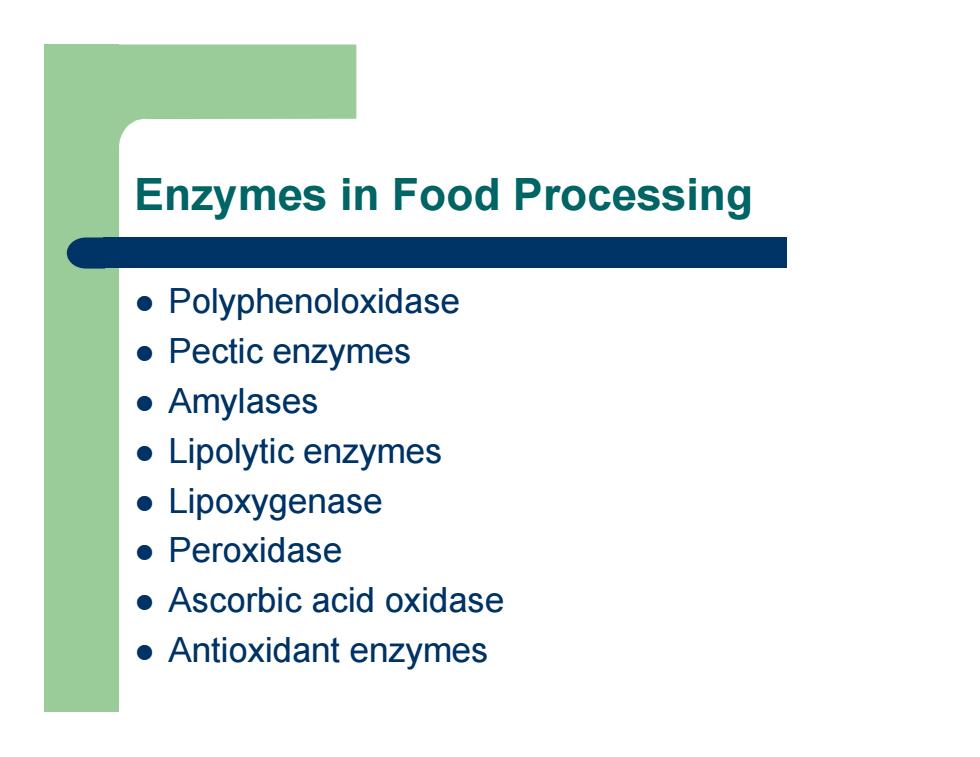
Enzymes in Food Processing z Polyphenoloxidase z Pectic enzymes z Amylases z Lipolytic enzymes z Lipoxygenase z Peroxidase z Ascorbic acid oxidase z Antioxidant enzymes
Enzymes in Food Processing z Polyphenoloxidase z Pectic enzymes z Amylases z Lipolytic enzymes z Lipoxygenase z Peroxidase z Ascorbic acid oxidase z Antioxidant enzymes

Polyphenoloxidase z Enzymatic browning z Cut surfaces of fruits and vegetables z Catalyze 2 types of reactions z Active between pH 5-7 z Cu cofactor z Inhibition
Polyphenoloxidase z Enzymatic browning z Cut surfaces of fruits and vegetables z Catalyze 2 types of reactions z Active between pH 5-7 z Cu cofactor z Inhibition
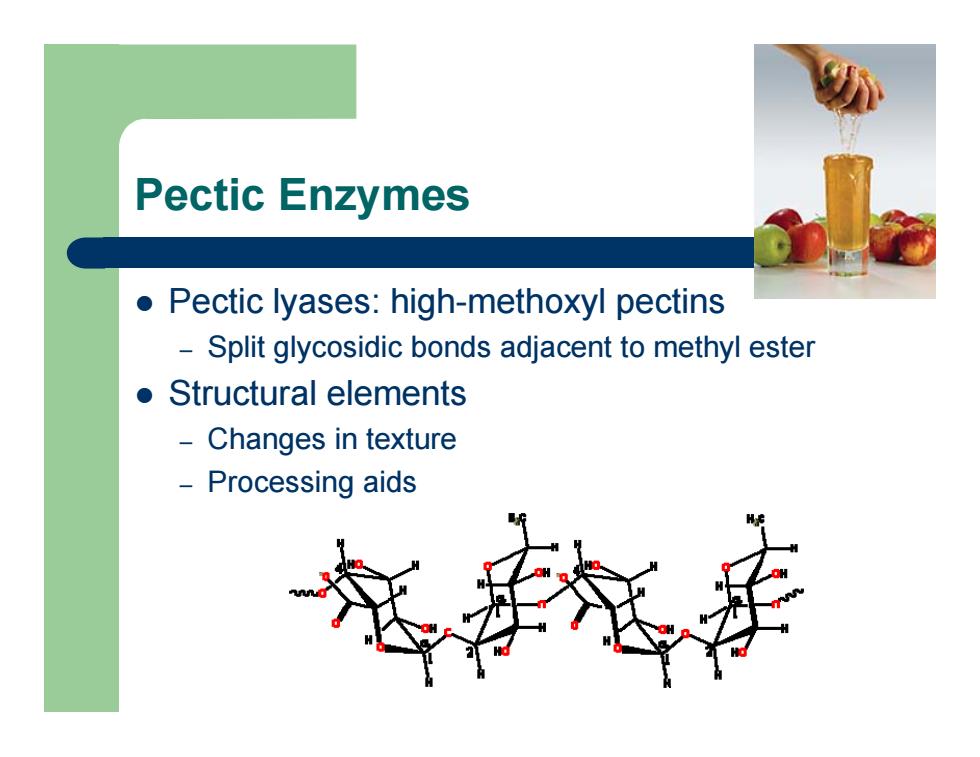
Pectic Enzymes z Pectic lyases: high-methoxyl pectins – Split glycosidic bonds adjacent to methyl ester z Structural elements – Changes in texture – Processing aids
Pectic Enzymes z Pectic lyases: high-methoxyl pectins – Split glycosidic bonds adjacent to methyl ester z Structural elements – Changes in texture – Processing aids